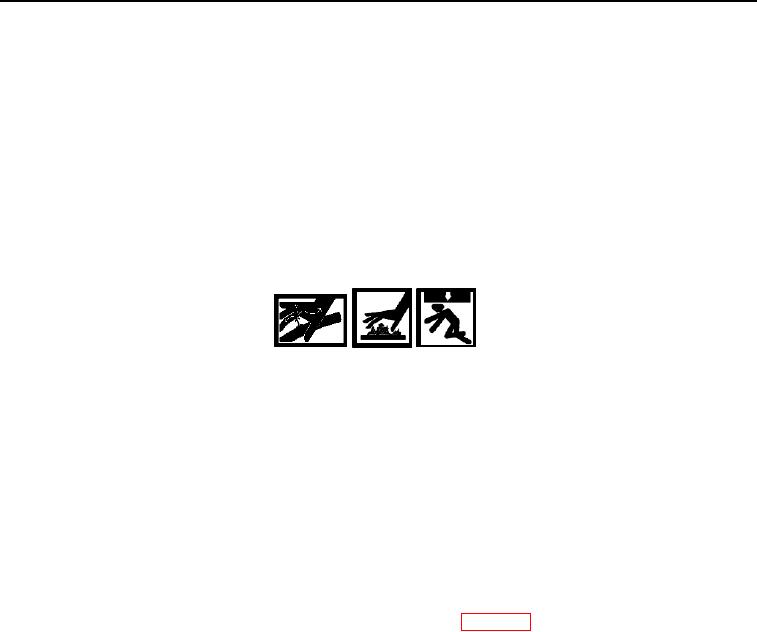
TM 5-3805-255-14
0078
ADJUSTMENT CONTINUED
Bucket Circuit Relief Valves
00078
CAUTION
Bucket circuit relief valves are preset. Valve seldom requires adjustment. Valves are
designed to protect bucket during closed circuit operation, while back-dragging or leveling
when bucket control lever is in HOLD position. Resistance developed at cutting edge is
transferred to loader linkage. Unless protected by circuit relief valves, excessive
pressures could inflict serious damage on loader linkage.
1. Prepare to adjust bucket circuit relief valves:
a. Place bucket on ground and all controls in HOLD or NEUTRAL. Apply parking brake.
WARNING
DO NOT disconnect or remove any hydraulic system line or fitting unless engine is shut
down and hydraulic system pressure has been relieved. Tighten all connections before
applying pressure. Escaping hydraulic fluid under pressure can penetrate the skin,
causing injury to personnel. Failure to follow warning may result in injury or death to
personnel.
Before attempting to adjust circuit relief valve, align frame halves and install loader safety
bar in straight ahead position. Do not move steering wheel while adjusting hydraulic
system circuit relief valve. Failure to install safety bar could lead to serious injury or death.
b. Stop engine. Relieve pressure in system by moving loader controls through their full travel several times.
Relieve reservoir pressure by slowly removing filler cap.
c.
Insert a tee connection in hydraulic lines on high pressure side of each relief valve.
d. Insert a hose connected to a 5,000 psi (34,474 kPa) gauge in stem of each tee. Gauge hoses must be long
enough to reach operator's compartment.
e. Check oil level in hydraulic reservoir and add oil if necessary (WP 0018).
f.
Replace and tighten reservoir filler cap.
g. Start engine. Raise boom slightly and retract bucket three-quarters of its travel. Release bucket control
lever as soon as bucket reaches desired position.
h. Release parking brake and move loader forward, allowing underside of bucket cutting edge to contact an
immovable object. Contact must be along full length of edge.
i.
By depressing accelerator, increase pressure on cutting edge. Note pressure at which valve discharges.
This pressure should equal recommended maximum. If pressure exceeds maximum, adjustment is
necessary (3,000 psi (20,684 kPa) plus or minus 50 psi (345 kPa) at full throttle).
2. Hold jamnut (Figure 9, Item 4) and remove acorn nut (Figure 9, Item 1) from relief valve (Figure 9, Item 5).
3. Hold adjusting screw (Figure 9, Item 2) and loosen jamnut (Figure 9, Item 4).
4. Hold jamnut (Figure 9, Item 4) and rotate adjusting screw (Figure 9, Item 2). Turn clockwise direction to
increase pressure and counterclockwise to decrease pressure.
0078-10

